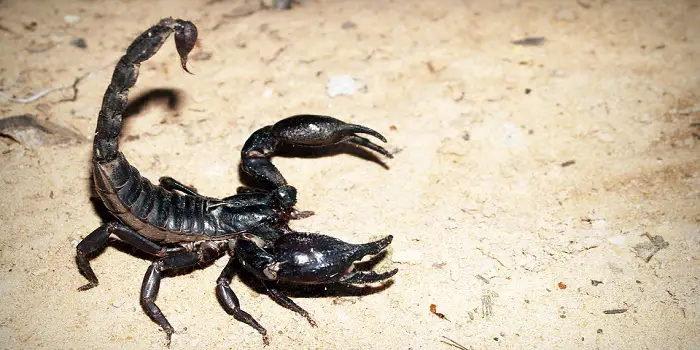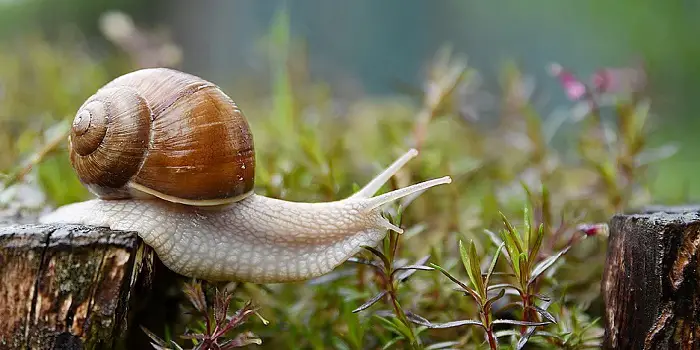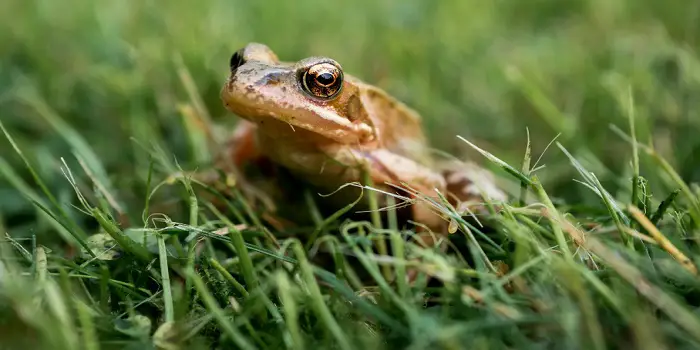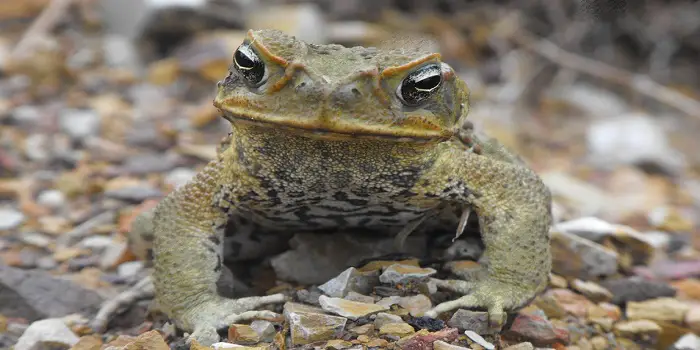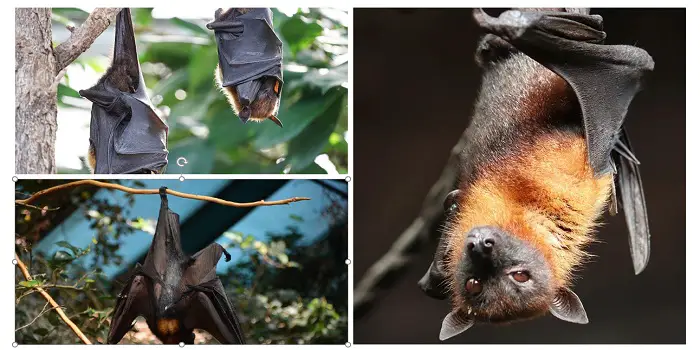
Bats are the only mammals that can fly.
They may be helpful for those who have a lot of insects in their backyard – as bats prey on them.
However, if the bats find a way into your house and in case you happen to inhale bat droppings (called guano), it could prove to be very dangerous and can cause common flu and diseases such as histoplasmosis.
Some bats even bite and could have rabies.
The feces of bats can also degrade the flooring of your house and yard.
If you want to know whether your house abodes bats or not, then listen to the squeaky and scratching noises from the wall, chimney, and roof!
Sometimes you may also see the stains of bats droppings on your ceilings that can confirm the presence of bats and their babies in your home.
The damaging effect of bats will however differ depending on the intensity of damage and area affected.
Hence, you may have different management solutions for getting rid of bats in your home.
But before we jump into those organic solutions, let’s address a few things that attract the bats to your house in the first place.
What Attracts Bats to Your House?
Once you know what the bats are getting attracted to and what type of environment they like to live in, you will most probably then have a definite approach to where to look for them and what to do about it.
Here are what attracts bats most to your home…
1- Food
Bats usually sleep during the day and hunt at night or after the sun sets.
Most species like to feed on moths, beetles, and mosquitoes.
They also eat plants as well as fruits like bananas, mangoes, dates, etc.
If you have a garden with fruit trees or have mosquito problems around your house, it’s a clear, welcoming message for bats.
2- Cave Dwellers
Since their origin, bats are known to be cave dwellers.
Since caves aren’t available in urban areas, the colony of bats finds other protective shelters where they can safely nest with their family.
This is the reason they are found resting upside-down under bridges, branches of trees, etc.
Besides these locations, they can also dwell inside hollow logs, storm drains, at the eaves of your building, or in the attic.
3- Fear of Predators
Hawks, owls, raccoons, and snakes are a few natural predators that bats fear.
Bats, therefore, always look out for places where these predators can’t find them easily.
Your garden, backyard, or attic is an ideal hiding location for bats that those predators can’t get into.
18 Home Remedies to Get Rid of Bats in your House
Apart from various health and environmental issues, bats are also seen as a scary and bad omen that may force you to eliminate them from your house and garden.
Here are 18 remedies to get rid of bats from your house, yard, attic, etc.
1- Cinnamon
Cinnamon repels bats and is completely safe to use for them.
Bats dislike its smell and get repelled by it.
Just mix some water with cinnamon powder and spray it in the infected area. If the smell fades away, then re-spray.
You can sprinkle cinnamon powder on their abode. Bats will never come back to your home.
2- Mothballs
Naphthalene balls or mothballs have a pungent smell that deters bats.
Just take a piece of cloth and put some balls in it.
Keep it near their nesting area or at the entrance. You can also tie it around doors and windows.
It will not just repel bats for also keep several insects at bay.
3- Phenol
Phenol is helpful in keeping pests at bay from home and is a great way to deter bats.
Fill phenol in a spray bottle and spray it at their nesting location and flying route. Its pungent odor will irritate them, and they will go away
4- Sealants
If you know the entrance and exit locations of the bat, then just use a sealant to remove them from your house.
Once all the bats are out of your house seal the entry and exit points with a sealant-like board or net.
They will never find a way to enter your home again. Also, place some mothballs to wipe them out of the house.
5- Aluminium foil
Aluminum foil is yet another harmless approach to wiping out bats from your home.
The crinkling noise produced when bats fly around the foil annoys them.
The reflective surface agitates them, and they deter from entering the such area.
All you need to do is hang some aluminum foil strips in the areas where bats fly.
It will not just make the nesting bats leave your home but also not allow the new one to enter.
6- DIY bat box
You should make a bat box if you want to bat-proof your house.
Shield all the entrance points and offer them another shelter to eat and live.
With a new home to live in, they will not enter your home again.
7- Spray water
If you don’t want to hurt bats, then you can just spray water directly on them.
However, ensure that your walls and roof don’t get damaged in the process.
Just put water in a spray bottle and spray at them when they are sleeping in their nests.
If it is your backyard or garden, then use a hose. It will make them leave the area.
Once the area is clean, get the gaps repaired immediately to prevent their re-entry.
8- Aerosol spray
You can also get an aerosol spray to keep bats away from your house as it deters them in an efficient manner.
Make sure you don’t spray it directly on them or at the time of roosting.
It will kill the bats, which is illegal in some places.
So, once they leave the house to find food, spray it at their nesting location, and they will not come back.
9- Floodlight
A floodlight will light the complete area where the bat’s habitat is.
Since bats cannot stay in a light, they will get irritated and move out.
Most of the time, they will go far away from your home and will not try to return.
10- Fiberglass
It is yet another humane way to control bats.
Bats are annoyed if they get in touch with coarse fiberglass material.
So, if you use fiberglass in your house, bats will leave the place.
With the help of rough fiberglass insulation material, you should get your attic and other roosting areas insulated.
11- Christmas decorations
Using Christmas decorations to get rid of bats is a human, cost-effective and simple option.
The vibrancy of the decorations and their reflective surface annoys the bats and makes them leave the place immediately.
Just hang the decorations at their entry points and near their habitat.
12- Ultrasonic repellents
You can easily get ultrasonic repellents from pest control shops.
They are a good option to deter bats.
Though it may not work as well as the other remedies, you can give it a shot.
13- Remove insects
Bats prey on insects, so if your house has a lot of insects, they will get attracted to your place.
Though bats will eat all the insects in your house, they will themselves create a mess.
So, you should get rid of insects, and indirectly you can prevent bats from getting attracted to your yard.
14- Repair damaged walls
Bats come inside your home via doors, windows, and openings.
Holes of just 1-2 inches are enough to allow a bat to squeeze in.
Check your home for crevices, cracks, and holes in the roof and walls. Get them sealed immediately to avoid any infestation.
Sealants such as caulk, chimney caps, window, and door screens, are a few products that can help prevent bats from entering your homes.
15- Take the help of mirrors
If you don’t want to hurt the bats in your house, then use mirrors.
It works as a pesticide and helps you to get rid of them.
All you need is a mirror and sunlight to prevent them from entering your home.
Allow the mirror to reflect the light of the sun to their nesting area.
As bats sleep during the day, they will get irritated and fly away.
16- Make use of check valves
If you are not aware of the entry points of the bats, then put a check (one-way) valve.
Though they can get out easily, but will not be able to come inside again.
These valves are helpful as they ensure that none of the bats are left in the house.
As each one of them will go out at some point, there is a great chance that soon, your home will be pest-free.
17- Peppermint oil & Eucalyptus oil
Peppermint gives a fresh smell to your food items, but this smell may not be preferred by bats.
Spray peppermint oil and water mixture in your home to repel bats.
You can also crush some peppermint leaves near their colony to irritate them. If the smell begins to fade away, re-apply!
Eucalyptus smell also repels bats.
This is why they don’t prefer habituating to locations with eucalyptus fragrances.
Mix water and eucalyptus oil in a spray bottle and spray on them or around them
18- Take the help of bat repellent gel
If none of the above remedies help you in deterring bats, you should just purchase a bat repellent spray or gel from a pest control shop, near you.
Though it is not a home remedy, it will keep bats away from your house.
They will eradicate bats from your porch, chimney, and attic too.
You can also get the sticky anti-bat gel to keep bats away from your house. Apply it to the entry points to get rid of bats.
Bats don’t land on gels, so generously apply them to the infected area, and they will surely leave.
Once they have left, just clean and seal the roosting locations.
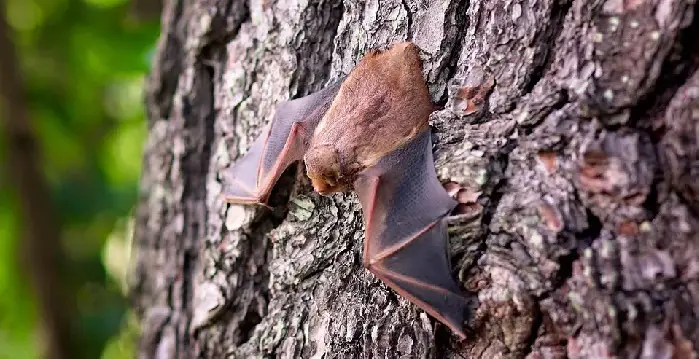
Signs of Bats in the Roof or Attic
Although bats are not very destructive, the significant amount of bat droppings around the bat roosts can cause severe problems.
You should therefore look for the signs of bats in your roof and attic before you actually try the above home remedies for eliminating them.
A few signs of bats are:
- Scraping or squeaking sound heard on your rooftop
- Bats entering and exiting your home during the sunset
- Brownish or grayish stains near the entry or exit points of bats roost
- The pungent odor of the bat guano and urine – which grows stronger over time
Are Baby Bats Considered Dangerous?
The infection of baby bats could be disastrous, especially if they nest in the attics or exploit humans and animals.
They are dangerous pests because of the deterioration they cause to other beings.
During the starting phase of their life, the pups don’t have any fur and are blind, meaning that they are not very active.
However, their impacts get substantial as they approach adulthood, majorly in the colonies shared with humans and animals.
a) Noise disturbance
Just like humans, bats mother’s and pups interact.
The baby can be heard squeaking in the few weeks after their delivery.
The babbling helps the baby bats to interact with their mother, though it may be helpful for the futuristic needs of the bats.
Baby bats also have a high-pitch voice (in comparison to the adult ones) which deepens in case the mother or target ignores them.
Hence, they are known to create a lot of noise, especially if you have a large baby bat nesting in your house.
The worst part is that they continue squeaking till their call is answered.
b) Hazardous to the ecosystem
Though bats infestation lowers the population of mosquitoes, the effect of their infection in the natural environment can be very high, majorly when you want to conserve rare insects.
Brown bats eat lots of insects, and even a pup is said to consume 500 insects on an hourly basis.
This may pose a risk of extinction, which is why conservancies have issues with bat management programs that majorly aim at baby bats, as they are a risk to the present and future natural system.
c) Contaminated food and drinks
Baby bats, if not controlled, can easily come in contact with your food in the house and contaminate it.
Plus, as baby bats are likely to get scared, they pose a high risk of falling in stored water or food.
Being so small in size, there is a very low chance of them being noticed in the storage, which raises the intensity of contamination.
The effect is equal to human and animal food, and there is a high chance of contaminants getting transferred to your pets if they live in your home.
What About Baby Vampire Bats?
They are a species that feeds on blood and thus depend on the live hosts for their life.
They are around 3% of the bat population and can have a disastrous impact on humans.
This species is commonly found in Latin America.
The baby vampire bats infection is hazardous for humans and animals, regardless of the size of the group.
During their growing phase, baby vampire bats have a higher appetite for blood which leads to an increase in their blood consumption.
However, unlike the other pests’ operations, bats function at night and hence leave no traces.
Thus, they can be called silent pests, especially for home pets like cats and dogs.
Though their consumption may be less, constant preying may hamper the health of the host.
It also enhances the risk of transmission of contagious diseases from separate hosts.
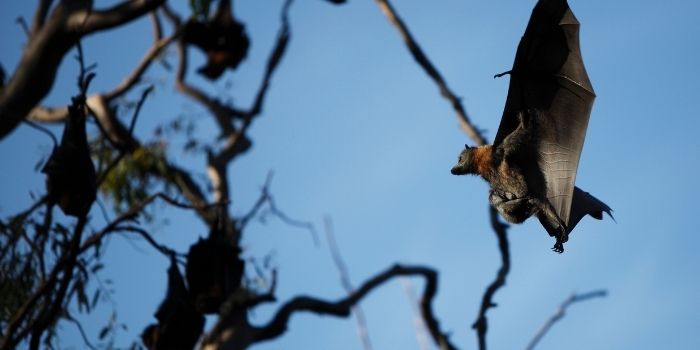
How Can You Control Baby Bats Infestation?
Baby bats usually don’t harm humans.
The majority of the problems are related to when they are present in the big colonies or groups.
In comparison to the adult bats, baby bats’ infection is simpler to control because of their tiny size and low population.
If you notice a pup falling from the roost, you can help them find a new bat habitat.
Countries like Australia have houses for the bat pups because they help in controlling the hazardous insects which are considered pests there.
If the area is highly infested with bats, the pups can cause as much destruction as the adults – particularly when the baby bats have vampire characteristics.
In the case of vampire baby bats, the control can be done by pesticides.
Pesticides are used on pups to deter them from staying in your home, majorly for the long term.
In some cases, you may need the help of pest removal professionals, especially when the vampire baby bats are present in larger quantities and you cannot control them in a DIY way.
Other Related Questions:
What is bat echolocation?
Echolocation is a physiological process that helps the bats to locate their prey by means of sound waves that are “echoed” or reflected back to them after hitting the prey.
Bats produce this echolocation sound by contracting their larynx (voice box) or clicking their tongues.
This allows them to “see” the objects or prey with the help of sound.
Bats, while chasing insects and mosquitoes, use echolocation (a kind of sonar) to navigate and find them in the dark even though the prey is far away from them and not visible.
Why are people afraid of bats?
Bats are usually shy and will avoid getting in contact with humans.
They rarely bite and do so if only they feel threatened.
Vampire bats, which are native to Brazil, are the only type of bat that’s known to feed on blood.
With that said, people all around the globe are found to be afraid of these creatures due to their mouse-like ears, snouted faces, membranous wings, diseases such as rabies, etc.
The fear of bats is also common in a few societies due to the horror stories of Dracula and the bats’ role in them who are believed to bite and suck the blood of humans.
In general, these are the group of people who suffer from severe fear or phobia.
When they see or even think of bats, they may suffer from anxiety or fear.
How to attract bats to your yard?
Despite all the fear and phobia, bats are known to be the top productive creatures.
Do you know that most North American bats can gobble up over 800 to 1,000 mosquitoes per hour?
If you have a colony of 50 bats around, it’s like hiring a pest control team that can eliminate 50,000 insects in just 60 minutes.
This is the reason why many people like to attract bats to their houses.
If you want to lure bats inside your property for good reasons, you can try these different ways…
- Attract bats to roost by building or buying a bat house
- Provide them a source of water by installing a birdbath or fountain in your yard
- Consider planting fragrant flowers and herbs that attract nocturnal insects in the garden
Dahlia, nicotiana, thyme, evening primrose, French marigold, etc., are a few plants that can work to attract bugs and hence bats.
Can you shoot or poison bats on your property?
Since bats are good for our ecosystem, they are protected by state laws.
This simply means that you are legally not allowed to kill, poison, or shoot the bats on your property.
According to bat conservation and management, the only legal way to remove bats is by trying humane ways and natural home remedies that can work for them.
Before you try to deter them, it’s good to identify the species and their maternity season so that you can get rid of them before the maternity season starts.
The Conclusion
Bats can have a disastrous impact on the presence of human beings if found nesting in groups.
The bat infestation in your home can also raise the risk of contaminants along with hazardous diseases like rabies.
While you are not allowed to kill the bats because of the risk of their extinction (as they have a low production rate), you always have natural ways out there that can help.
The above measures and home remedies have already worked in the areas where authorities don’t propose killing the bats and pups.
Hopefully, these can also work for you to control the bats in your home.
Share the post "18 Most Effective Home Remedies for Keeping Bats Away"

Welcome to ProShieldPest.com. I am Tina Jones. I have been working as a pest removal professional in Winslow, Arizona lately. At present, I love to spend my time with my family as a retiree.
Here I share all my knowledge and experiences to help people understand better how they can stop pests at their homes without actually killing them. Hopefully, the information you will find here will help in safeguarding your home! You can check more about me here.

